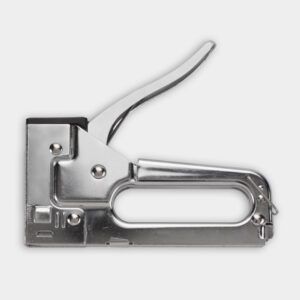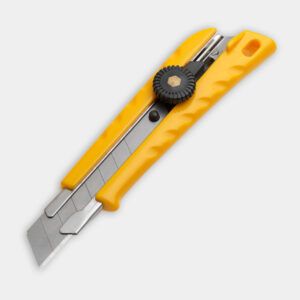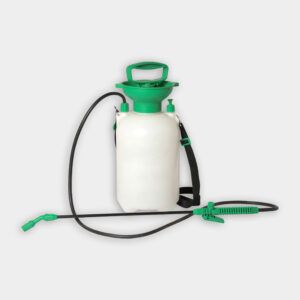Cold weather can damage or even kill your plants—especially evergreens, which are vulnerable in winter. By taking proactive steps to protect your shrubs, you can help them survive the frigid temperatures, heavy snow, and drying winds.
In the above video, This Old House landscape contractor Roger Cook explains some effective techniques for winterizing shrubs and offers expert advice on how to keep your plants thriving throughout the cold winter months.
How To Winterize Shrubs
There are several strategies to protect your shrubs during winter, such as watering and mulching, creating wind barriers, and applying anti-desiccants.
Timing Your Winterization Efforts
You need the right timing for winterizing shrubs. Follow these guidelines:
- Begin preparations in late fall, typically November.
- Consider additional protection when temperatures consistently drop below 25°F.
- Continue protective measures throughout the winter season.
- Pay extra attention to newly planted shrubs for the first two years.
Watering and Mulching
Shrubs need proper hydration, as winter winds can dry out plants even when the ground seems moist. Mulching helps moderate soil temperature and retain moisture.
Water shrubs thoroughly during fall until the ground freezes. Apply a 3-4 inch layer of mulch around the base of the shrubs, using bark mulch or ground-up leaves to insulate the soil. Extend mulch to the drip line of the shrub, but avoid piling it against the trunk.
Creating Wind Barriers
Wind protection prevents moisture loss in shrubs. This method allows moisture to reach the plant while shielding it from harsh winds:
- Drive wooden stakes into the ground around the shrub.
- Wrap burlap around the stakes, creating a protective barrier.
- Staple the burlap to the stakes for secure attachment.
- Make sure the burlap touches the soil to maximize protection.
Applying Anti-Desiccants
Anti-desiccants are surface sprays that protect evergreen shrubs by preventing moisture loss from leaves throughout the season. Here’s how to apply it:
- Choose a day when temperatures are above 40°F.
- Spray anti-desiccant on both the top and bottom of the leaves. Use a garden pump sprayer for efficient application on multiple shrubs.
- Apply monthly throughout winter, starting in November.
Protecting Shrubs from Snow and Ice Damage
Heavy snow and ice can significantly damage to shrubs, especially those with upright growth habits. Protect your shrubs from snow and ice with the following methods:
Tying and Wrapping Techniques
Tying and wrapping your shrubs prevents branches from breaking off due to snow or ice. Here’s how to do it:
- Use jute twine to tie up branches of tall, narrow shrubs.
- Wrap the twine around the shrub in a spiral pattern.
- Secure branches at multiple points for added stability.
- For new plantings, consider wrapping the entire shrub in burlap.
Creating Protective Structures
For shrubs near buildings, consider building protective structures with these steps:
- Construct an A-frame using two-by-fours and exterior-grade plywood.
- Place the structure over shrubs to shield them from falling snow and icicles.
- Check that the structure is sturdy enough to withstand winter conditions.
- Remove the structure in spring to allow for normal growth.
Special Considerations for Different Types of Shrubs
Not all shrubs need the same level of winter protection. Consider the following factors when winterizing.
Evergreen Shrubs
Evergreens are particularly vulnerable to winter damage. Here’s how to protect them:
- Consider using burlap wind barriers for exposed evergreens.
- Pay extra attention to broadleaf evergreens, such as rhododendrons and boxwoods.
- Provide additional protection for yellow-leaved evergreens for the first three years.
- Use anti-desiccants more frequently on these plants.
Deciduous Shrubs
While generally hardier, deciduous shrubs still benefit from winter care. We recommend these steps:
- Consider wrapping young or newly planted deciduous shrubs.
- Focus on proper fall watering and mulching.
- Prune dead or damaged branches before winter to prevent further damage.
Tender or Borderline Hardy Shrubs
Some shrubs may be at the edge of their hardiness zone. Keep the following in mind for these tender or borderline hardy shrubs:
- Consider moving container plants to a sheltered location.
- Provide extra protection with burlap wrapping and mulching.
- Use additional insulation, such as straw or leaves, around the base of these plants.
Maintaining Shrubs Throughout Winter
Winterizing isn’t a one-time task. Bake these tasks into your regular routine:
- Check and adjust protective structures as needed.
- Gently brush off heavy snow accumulation from branches.
- Monitor shrubs regularly for signs of damage or stress.
- Reapply anti-desiccants monthly.
Preparing Shrubs for Spring
Spring rejuvenates shrubs after winter. As the sunnier months approach, take these steps to transition your shrubs:
- Apply a balanced fertilizer once new growth begins.
- Gradually remove protective coverings on warmer days.
- Prune any winter-damaged branches in early spring.
- Slowly reduce the watering of container plants that were moved indoors.
Additional Tips for Shrub Care
To keep your shrubs thriving, you need to take care of them year-round. Here are some additional tips to promote healthy growth and resilience.
Regular Inspections
Pay attention to the following when inspecting your shrubs to catch potential problems early:
- Check the soil moisture level to avoid underwatering or overwatering.
- Look for signs of pest activity or disease.
- Notice any physical damage to the plant structure.
Soil Management
Maintaining healthy soil contributes to the overall well-being of your shrubs. Follow these tips:
- Assist your soil with compost or organic matter to improve texture and fertility.
- Check for proper drainage to avoid root rot and other moisture-related issues.
- Test your soil pH regularly to check for the best planting conditions.
Pruning Practices
Proper pruning improves the health and appearance of your shrubs. Here’s how to prune your shrubs:
- Prune in late winter or early spring before new growth starts.
- Remove dead, damaged, or diseased branches.
- Shape the shrub to encourage a strong structure and growth.
Tools
Below are some tools you may need to winterize your shrubs:





